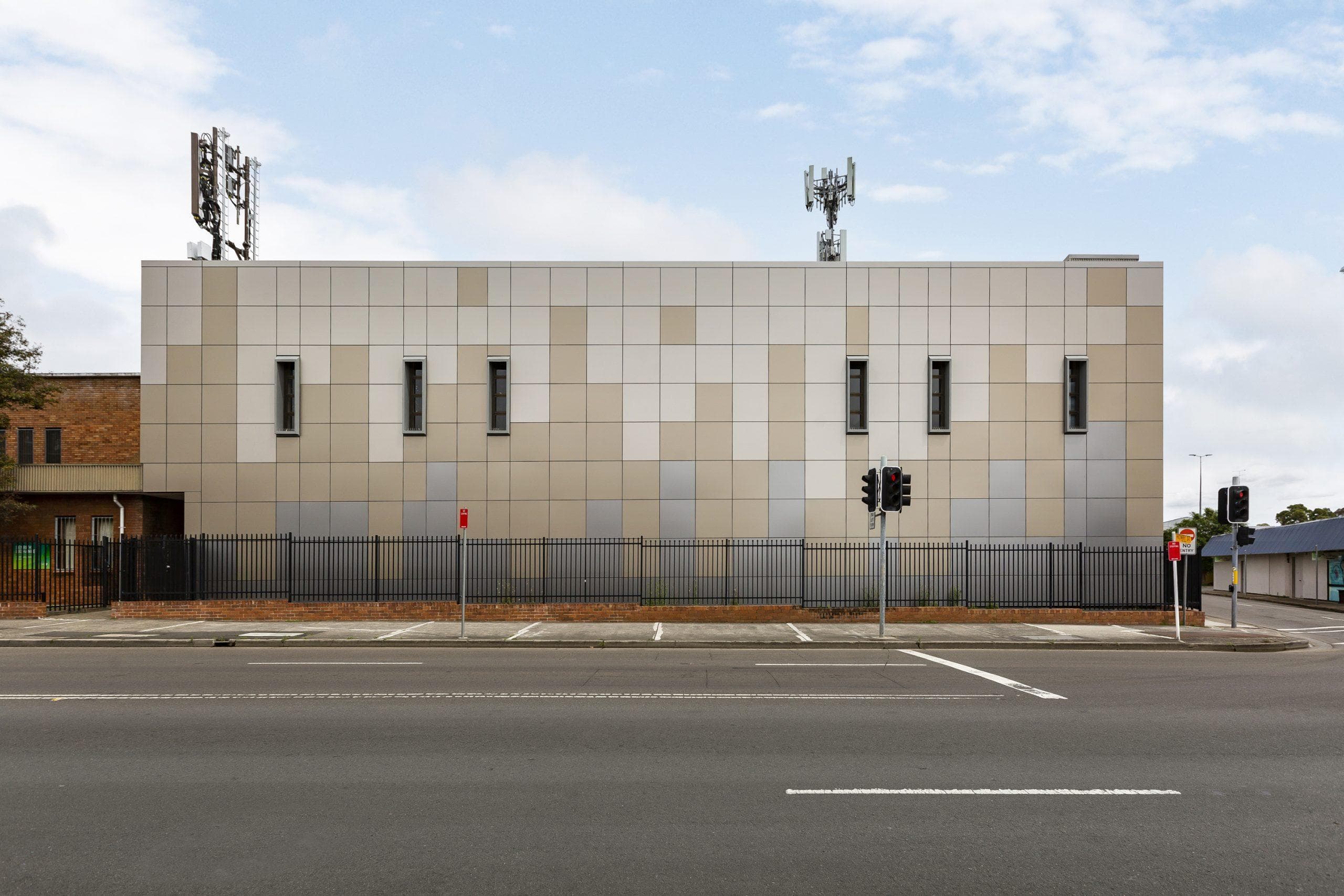Recladding & modernisation – a phenomenal façade transformation
ALPOLIC™ NC/A1 has been part of a leading telecommunications recladding corporate roll-out to upgrade the dated looking pebblecrete & non-compliant clad nationally across Australia. Learn about the phenomenal transformation of each building and the preferred architectural cladding product used.
The brief was simple, to upgrade dated looking facades across Australia for a leading telecommunication organisation to freshen and modernise their buildings, while also completing remedial work on the existing concrete itself. So, it was no surprise that ALPOLIC NC/A1 was the material of choice for this national recladding project that is rolling out across Australia for a leading telecommunications company. The façade transformation from the recladding of these buildings across Australia has been phenomenal.
We spoke to a few key people involved in these projects across the country and asked why ALPOLIC™ NC/A1 was the product of choice. “Many people don’t realise the amount of time, resources and often years that go into these types of commercial upgrades. What makes it easier is dealing with experts in architecture, construction and project management, which has been the case when working on the building upgrades”, says Terry Lockerbie, Business Development Manager, Network Architectural.
One of the first buildings transformed was Chatswood a 10-storey building which was extremely outdated compared to the modern infrastructure being built in the area. The ALPOLIC™ NC/A1 product was a perfect solution for the exterior of this building. It required a durable solution that is designed to survive Australian weather conditions. With Lumiflon FEVE coating technology on the panels, it provides for a higher bond energy than UV rays, providing superior UV resistance and anti-corrosion for the building. “It also carried the best manufacturer’s warranty compared to all other competitors” said Dane Wilson, Project Managers Ventia.
Also, eliminating the concerns surrounding combustible cladding, ALPOLIC™ NC/A1 has a non-combustible core with zero polyethylene. Known to be the first ACM product to meet Category D (non-combustible) in the Insurance Council of Australia Hazard Identification and Category Rating guide, this was the perfect opportunity to exceed code requirements” said Joey Bacic, Managing Director, OMG.CO – who refuses to accept anything less than the highest industry standards for any product they work with.
When it came to the next building on Exhibition St in Melbourne, aesthetics was key in the use of ALPOLIC™ NC/A1 as the cladding system needed to conceal the remediation work of the current pebblecrete facade. Having never heard of ALPOLIC™ NC/A1 previously, Aaron Callegari, General Manager at WHA said, “what sets Network Architectural apart is that they were extremely helpful in working with us on this project, Terry was great, if we ever needed help on anything technical or explanations we always had a direct line and was extremely accessible”. Given aesthetics were extremely important on this project “Network Architectural also had the widest range of colours and panel stock on hand, which ensured we had everything we needed to complete this project”, said Aaron. ALPOLIC™ NC/A1 is the only non-combustible cladding that comes with an unrivalled 20-year, manufacturers backed warranty, where no maintenance cleaning is required to maintain your warranty, which gives building owners and architects complete peace of mind that this will stand the test of time in Australia’s harsh weather conditions.
To date several upgrade and re-clads have taken place as part of this national roll-out. The sites have included Redfern, Blacktown, Penrith, Chatswood and Parramatta in NSW, Exhibition St in VIC, and Launceston in TAS. Still to be completed is Waymouth and Flinders St in SA. ALPOLIC™ NC/A1 has been chosen due its superior flatness and fire performance, wide range of standard and custom colours, exceptional durability and unmatched 20-year full cover manufacturer’s warranty, which includes materials, labour and rectification costs. The building recladding upgrades speak for themselves. Network Architectural’s responsiveness, adaptability and the ability to see the big picture on all these projects has resulted in the best outcome for our client, which is a great result and ultimately what both Ventia & Network Architectural strive to achieve” said Dane Wilson, Ventia.
1. Penrith Recladding Upgrade
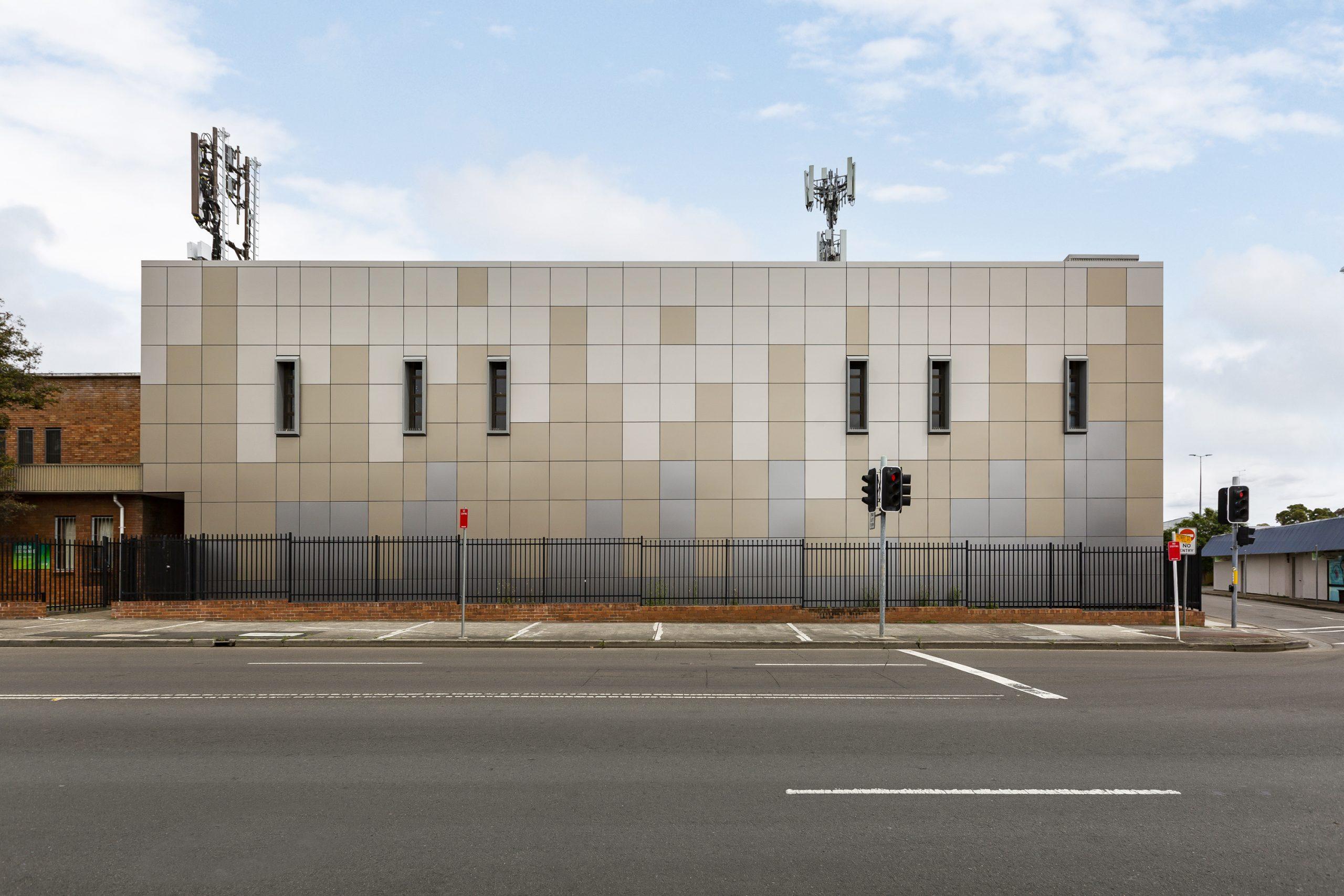
1,400m² of ALPOLIC™ NC/A1 DtS compliant non-combustible cladding in Light Bronze Metallic, Pale Copper Metallic, and Dark Grey Metallic finishes were used to re-clad and modernise this façade.
Architect: Brewster Murray
Project Manager: Ventia
Builder: All Industrial Services
2. Redfern Recladding Upgrade
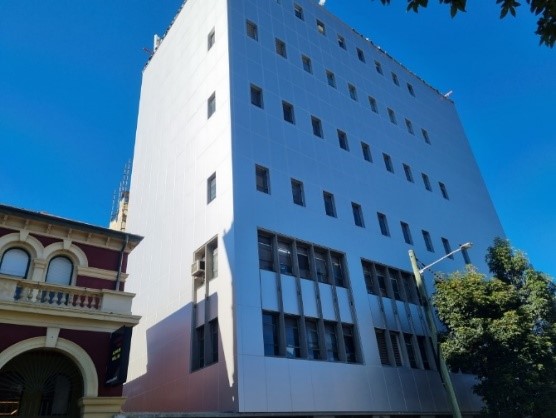 |
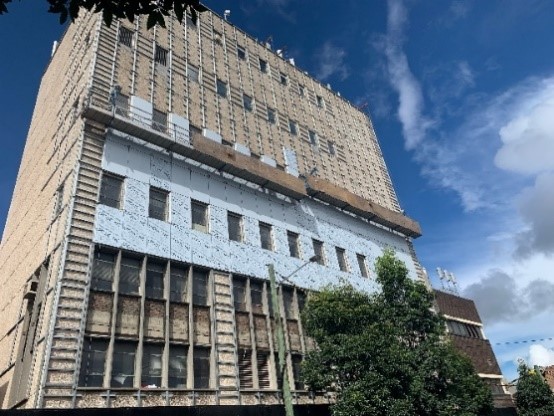 |
With this heritage listed building we needed to ensure the end result fitted within this code. 3,100m² of ALPOLIC™ NC/A1 DtS non-combustible cladding in Champagne Metallic finish was used in recladding and updating this heritage building.
Architect: Brewster Murray
Project Manager: Ventia
Builder: MWP Ltd
Installer: Austral
3. Launceston Recladding Upgrade
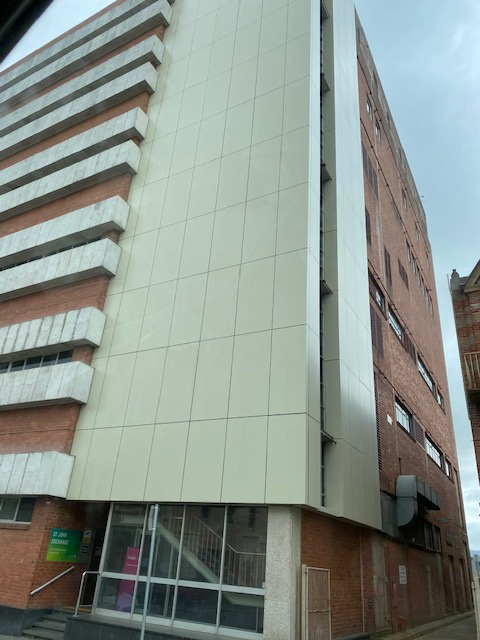
1,500m² of Champagne Metallic
Architect: Brewster Murray
Installer: Skyline Roofing
4. Blacktown Recladding Upgrade
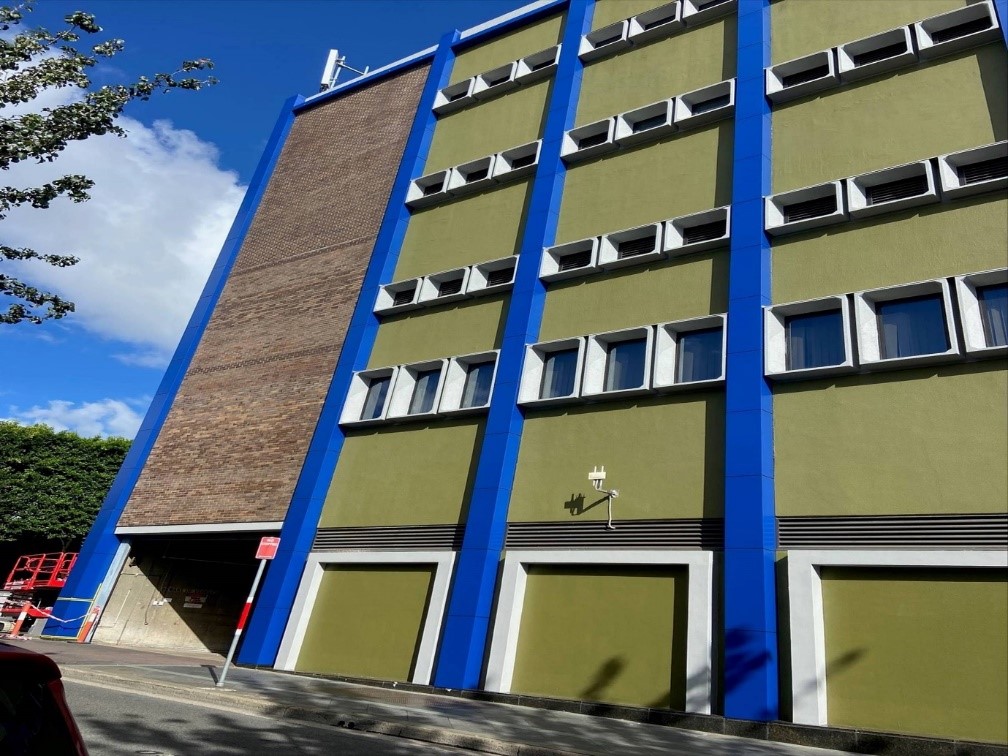
There were a few major challenges that were over-come with the Blacktown commercial building. Excessive concrete spalling was rectified prior to installation of the ALPOLIC™ NC/A1. Overall 500m² of Union Blue of ALPOLIC™ NC/A1 was installed to this major upgrade.
Architect: Brewster Murray
Project Manager: Ventia
Builder: ADCS
5. Exhibition St Recladding Upgrade
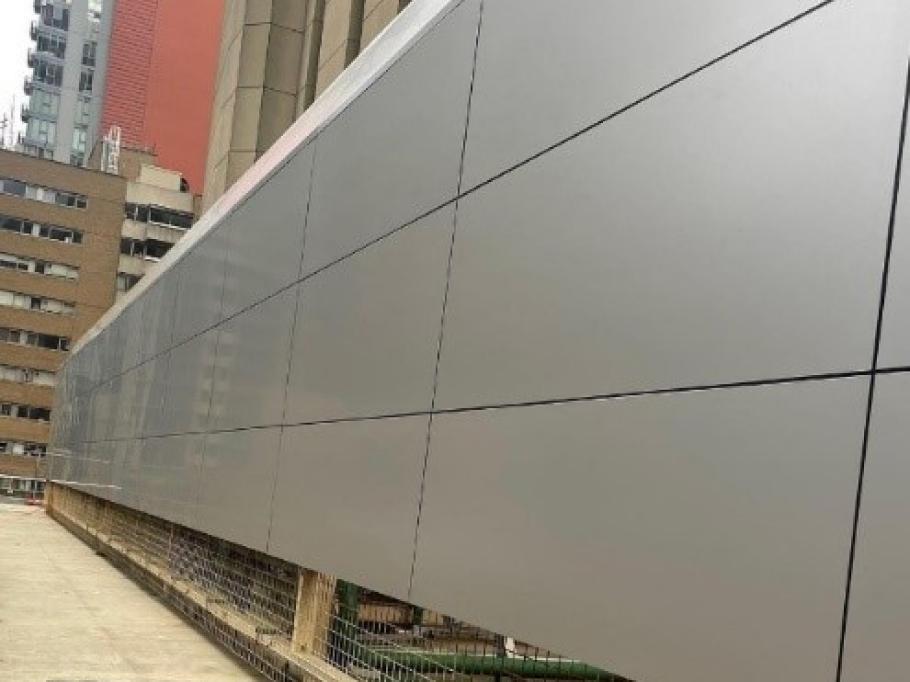
350m² of Champagne Metallic
Architect: Brewster Murray
Builder: WHA
Installer: Spot On Cladding
6. Chatswood Recladding Upgrade
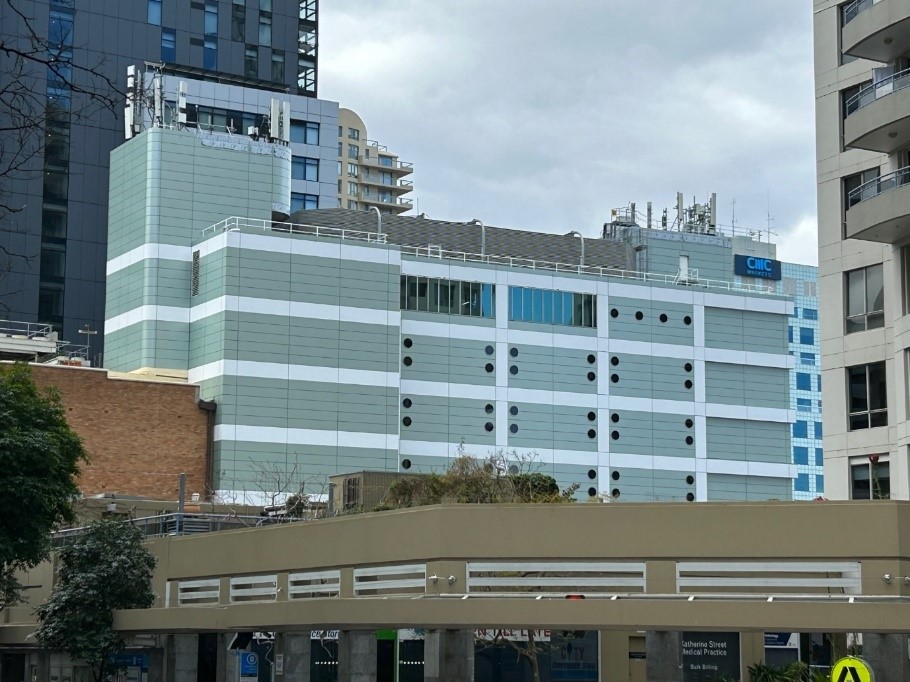
The Chatswood project involved recladding existing non-compliant panels. It was a difficult task due to its location being extremely tight for access, with a busy train station and rail corridor right next door. Public access had to be maintained whilst ensuring public safety for the duration of the project. The resulting transformation of this façade was very impressive with over 4,700m² of compliant ALPOLIC™ NC/A1 in Green Metallic and White installed on this prominent building.
Architect: Brewster Murray
Project Manager: Ventia
Builder: All Industrial Services
Installer: OMG.CO
7. Parramatta Recladding Upgrade
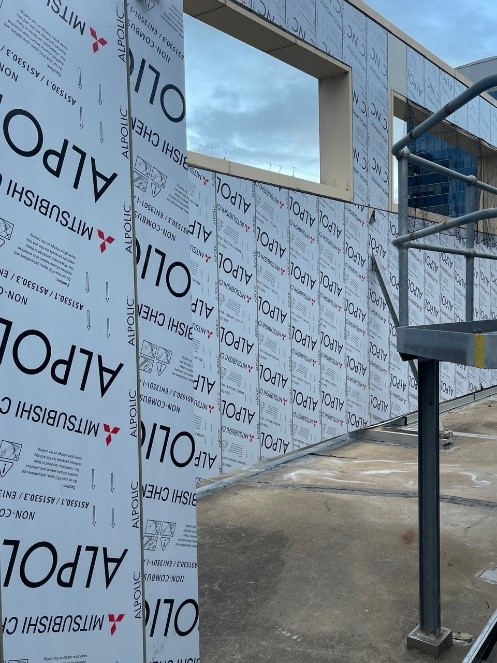 |
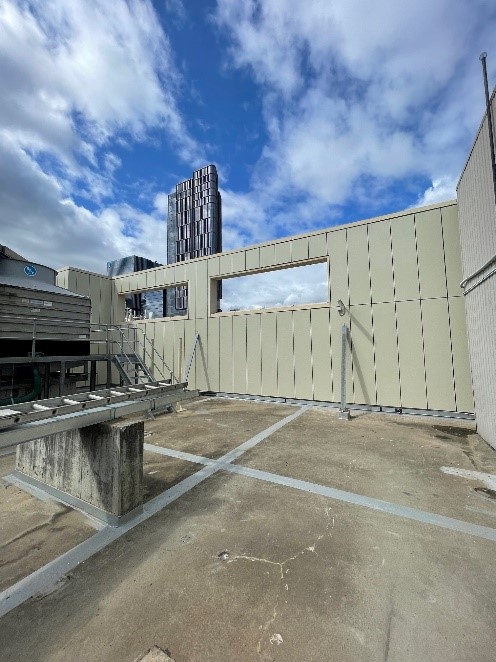 |
500m² of Sandstone colour ALPOLIC™ NC/A1 was installed on this building.
Architect: Brewster Murray
Project Manager: Ventia
Builder: MWP Ltd
If you are looking to upgrade your façade whether it be purely for aesthetics, improving energy efficiency or replacing non-compliant cladding, Network Architectural has an architectural and technical team to assist you through every step of the process. With ALPOLIC™ NC/A1 you can have the peace of mind that it is the most rigorously tested aluminium facade material and is approved for use in NSW Government’s Project Remediate program. We also pride ourselves on having the most sustainable environmental product on the market which is backed up with an industry-leading 20-year full replacement manufacturer’s warranty, so contact us today.
Related Articles

Understanding Facade Warranties: What Designers Should Ask Before Specifying Cladding
Warranties are often overlooked until problems arise, but they are one of the most important safeguards in façade specification. This white paper helps designers understand what is really covered, what is not, and the right questions to ask before signing off. Learn how to assess warranty terms, minimise project risk and protect long-term façade performance.
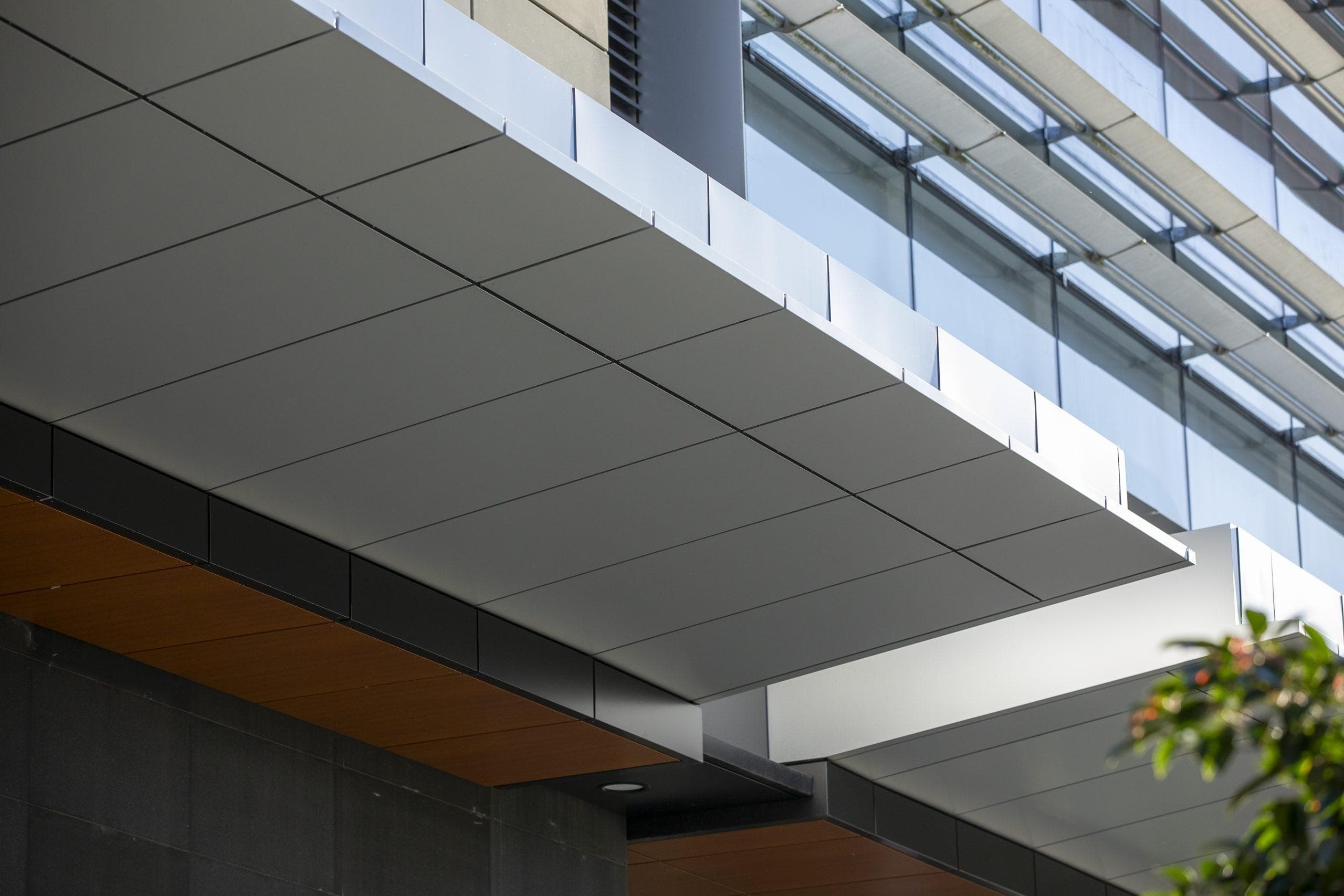
A declaration is a disclosure, not a sustainability guarantee: Network Architectural debunks the EPD myth
Environmental Product Declarations (EPDs) are invaluable for transparency, but they don’t automatically make a product sustainable. As Llewellyn Regler explains, EPDs are disclosure tools, not guarantees. This article unpacks the myth, showing why specifiers must look beyond the label to durability, maintenance, lifecycle cost and embodied carbon to achieve genuinely sustainable outcomes.
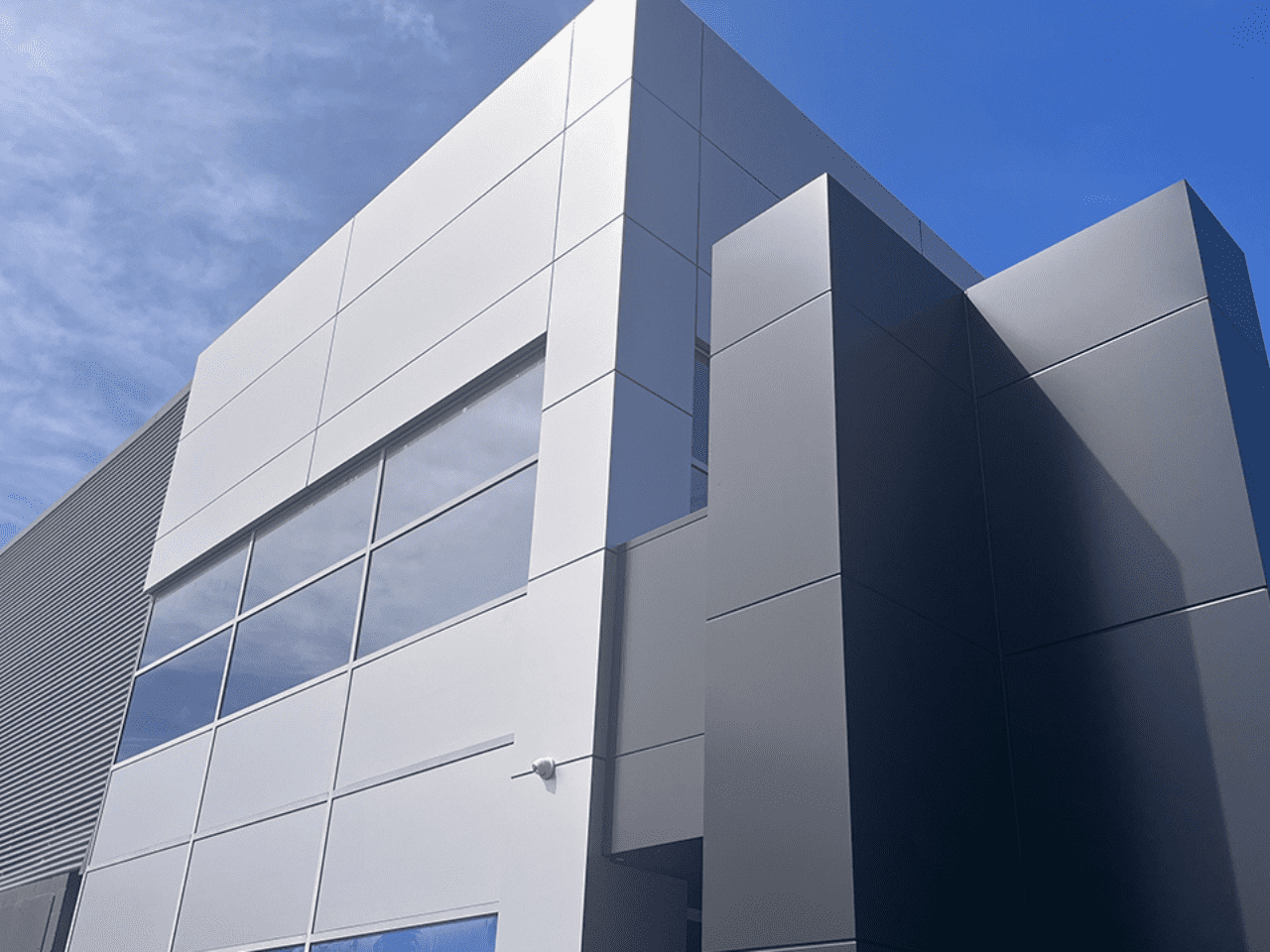
Specifying sustainable aluminium: Understanding the real environmental footprint of façade materials with LCA
Life Cycle Assessment (LCA) is fast becoming a must-have for architects navigating embodied carbon caps and stricter procurement standards. Yet, not all aluminium cladding is created equal. In this article, we break down how LCA helps specifiers cut through assumptions, compare Environmental Product Declarations (EPDs), and make sustainable, evidence-based design choices with confidence.
